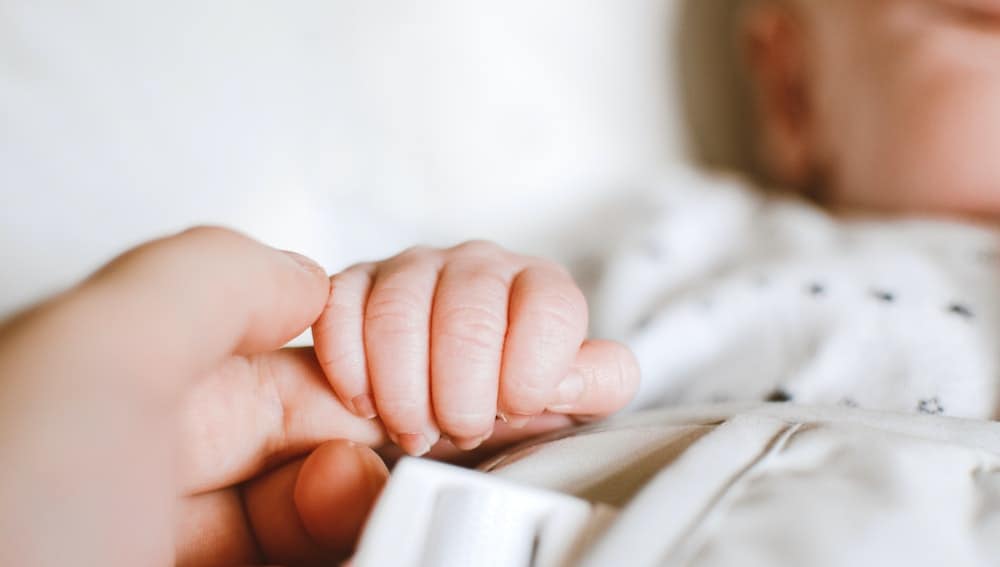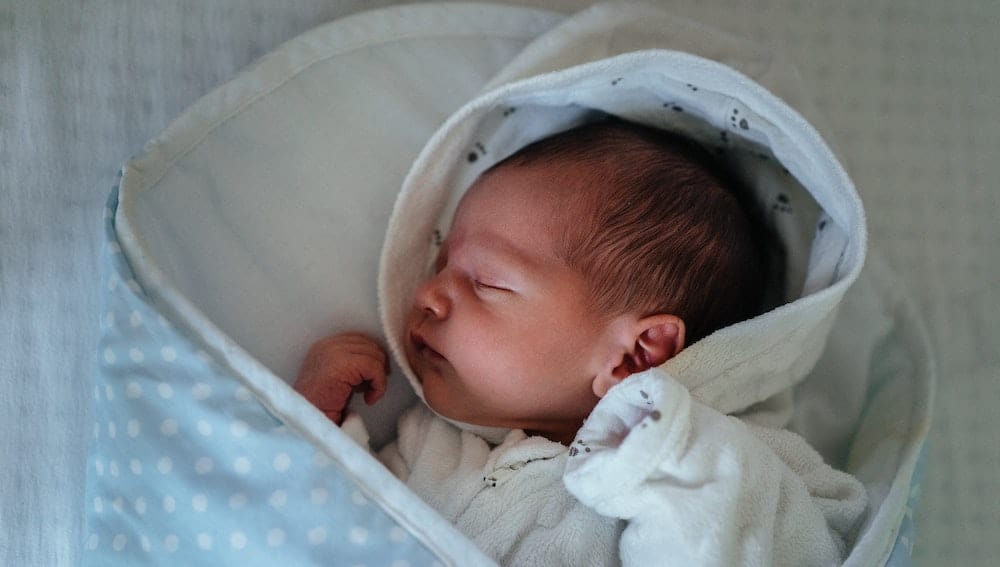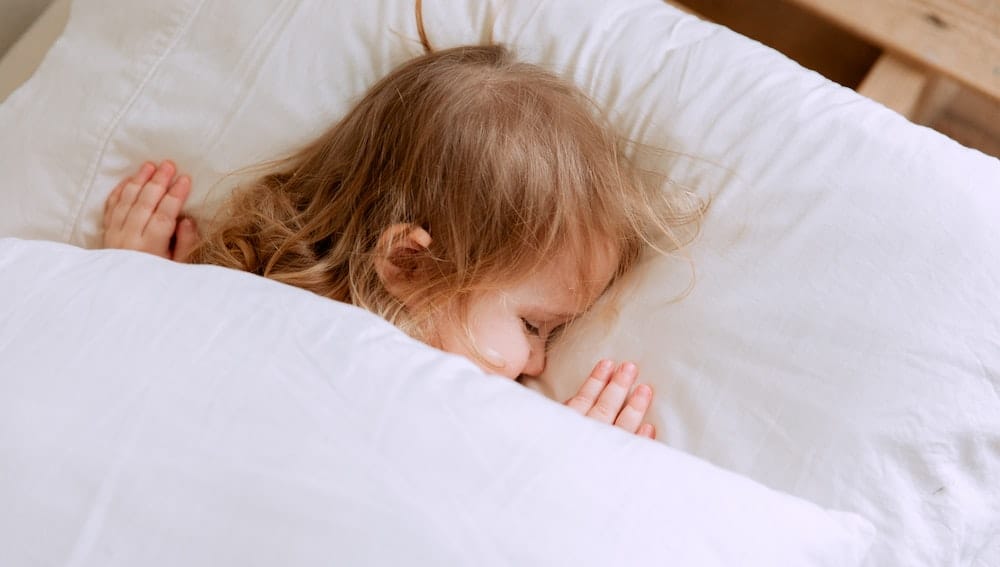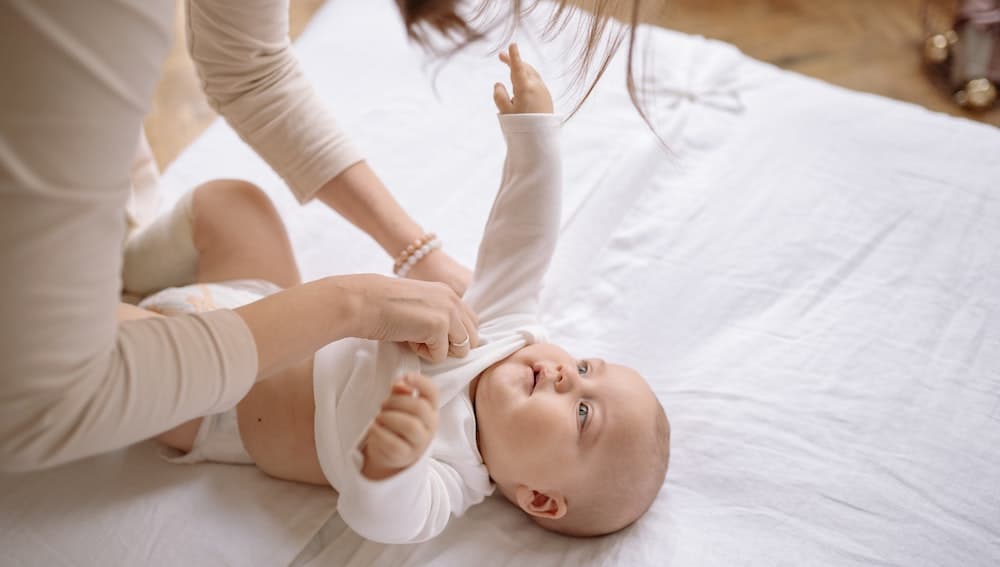Dressing a baby for sleep can be a daunting task, especially when it comes to determining the appropriate sleepwear for a specific room temperature.
With a room temperature of 70 degrees Fahrenheit, it’s important to dress your baby in appropriate layers to ensure they stay comfortable throughout the night. In this article, we will explore the best practices for dressing a baby for sleep in a 70 degree room.
Understanding your baby’s body temperature is key to dressing them appropriately for sleep. Babies have a higher metabolic rate than adults, which means they generate more heat.
However, they also lose heat more quickly, making it important to dress them in layers that can be easily added or removed as needed. Additionally, it’s important to keep in mind that babies should not be too hot or too cold, as both extremes can be dangerous.
Ideal room temperature for a baby’s sleep is between 68-72 degrees Fahrenheit. With a room temperature of 70 degrees, dressing your baby in appropriate sleepwear is crucial.
In the following sections, we will explore the different types of sleepwear that are suitable for a 70 degree room, the role of layers in dressing a baby for sleep, choosing the right fabrics, the importance of swaddling, using sleep sacks and wearable blankets, safety considerations when dressing a baby for sleep, and additional tips for dressing a baby for sleep in a 70 degree room.
Key Takeaways
- Understanding your baby’s body temperature is crucial for dressing them appropriately for sleep.
- The ideal room temperature for a baby’s sleep is between 68-72 degrees Fahrenheit.
- Dressing your baby in appropriate sleepwear and using layers is key to ensuring they stay comfortable throughout the night.
Understanding Baby’s Body Temperature
Babies have a different body temperature regulation system compared to adults. They are more sensitive to temperature changes and can quickly become overheated or too cold. It is essential to dress your baby appropriately for sleep to ensure they remain comfortable and safe.
Body Temperature
The normal body temperature for a baby ranges from 97.5°F to 99.5°F (36.4°C to 37.5°C). However, babies can have a slightly higher or lower temperature and still be healthy. It is essential to monitor your baby’s body temperature regularly and dress them accordingly.
Overheating
Overheating can be dangerous for babies and can lead to sudden infant death syndrome (SIDS). Signs of overheating include sweating, flushed cheeks, rapid breathing, and fever. It is crucial to dress your baby in breathable clothing and avoid covering their head with a hat or blanket.
Sweating
Sweating is the body’s natural way of regulating temperature. However, excessive sweating can be a sign of overheating. Dressing your baby in breathable clothing made of natural fibers such as cotton can help prevent sweating and keep them comfortable.
Fever
A fever is a sign of an underlying illness or infection. It is essential to monitor your baby’s temperature regularly and seek medical attention if they have a fever. Dressing your baby in light clothing can help regulate their body temperature and prevent overheating.
Circulatory System
A baby’s circulatory system is not fully developed, making it harder for them to regulate their body temperature. Dressing your baby in layers can help regulate their body temperature and keep them comfortable. It is essential to remove layers as needed to prevent overheating.
In summary, understanding your baby’s body temperature and dressing them appropriately for sleep is crucial for their comfort and safety.
Monitoring your baby’s temperature regularly and dressing them in breathable clothing made of natural fibers can help prevent overheating and keep them comfortable.
Ideal Room Temperature for Baby’s Sleep
Maintaining the ideal room temperature is crucial for the baby’s sleep. It is recommended to keep the room temperature between 68 to 72 degrees Fahrenheit (20 to 22 degrees Celsius) for the baby’s comfort and safety. In a 70 degree room, the baby will feel comfortable and sleep better.
It is essential to use a thermostat to monitor the room temperature. A thermostat will help to maintain the temperature and ensure that it does not fluctuate. The temperature should be checked regularly to ensure that it remains within the recommended range.
If the room temperature is too high, the baby may become overheated, which can lead to discomfort and increase the risk of sudden infant death syndrome (SIDS).
On the other hand, if the room temperature is too low, the baby may become too cold, which can also lead to discomfort and increase the risk of hypothermia.
To ensure that the baby is comfortable and safe, it is recommended to dress the baby appropriately for the room temperature.
A light sleeper or onesie with a sleep sack or swaddle may be sufficient for a 70 degree room. It is also important to avoid using too many blankets or layers, as this can also lead to overheating.
In summary, maintaining the ideal room temperature between 68 to 72 degrees Fahrenheit (20 to 22 degrees Celsius) is crucial for the baby’s sleep. Using a thermostat to monitor the room temperature and dressing the baby appropriately for the temperature will help to ensure the baby’s comfort and safety.
Appropriate Sleepwear for 70 Degree Room
Choosing the right sleepwear for a baby is essential to ensure that they are comfortable and safe while sleeping. In a 70 degree room, it is important to find sleepwear that will keep the baby warm without overheating them.
Here are some appropriate sleepwear options for a 70 degree room:
- Onesie: A short-sleeve onesie is a great option for a 70 degree room. It provides a comfortable base layer and allows for easy movement. It can be paired with a lightweight sleep sack or swaddle to keep the baby warm.
- Short-sleeve bodysuit: Similar to a onesie, a short-sleeve bodysuit is a comfortable option for a 70 degree room. It can be paired with pants or leggings for added warmth.
- Footed pajamas: Footed pajamas are a great option for babies who tend to kick off their blankets. They provide full-body coverage and keep the baby warm throughout the night.
When selecting sleepwear for a 70 degree room, it is important to avoid thick or heavy fabrics that can cause the baby to overheat. It is also important to avoid loose-fitting sleepwear that can pose a suffocation risk.
Overall, it is important to choose sleepwear that is appropriate for the temperature of the room and that will keep the baby comfortable and safe throughout the night.
The Role of Layers in Dressing a Baby for Sleep
When it comes to dressing a baby for sleep in a 70 degree room, layers are an essential component. Layers allow parents to adjust their baby’s clothing throughout the night to ensure they stay comfortable and safe.
It’s important to remember that babies have a harder time regulating their body temperature than adults, so overdressing or underdressing can put them at risk for overheating or becoming too cold. Layers allow parents to find the perfect balance for their baby’s comfort.
When dressing a baby for sleep, it’s recommended to start with a onesie or a sleeper as a base layer. From there, parents can add additional layers as needed. A good rule of thumb is to add one additional layer to what an adult would wear in the same temperature.
For example, if an adult would wear a t-shirt and shorts in a 70 degree room, a baby could wear a onesie and a lightweight sleep sack. If the room temperature drops during the night, parents can add a layer such as a swaddle blanket or a heavier sleep sack.
It’s important to regularly check on the baby throughout the night to ensure they are not too hot or too cold. Feel their chest or back to check for sweating or chills. If the baby feels sweaty or clammy, remove a layer. If they feel cold, add a layer.
In summary, layers play a crucial role in dressing a baby for sleep in a 70 degree room. They allow parents to adjust their baby’s clothing throughout the night to ensure they stay comfortable and safe.
Remember to start with a base layer, add additional layers as needed, and regularly check on the baby’s temperature throughout the night.
Choosing the Right Fabrics
When it comes to dressing a baby for sleep in a 70 degree room, choosing the right fabrics is crucial. The fabric you select can impact your baby’s comfort and safety during sleep.
Here are some things to keep in mind when selecting fabrics:
Natural Fabrics
Natural fabrics like cotton, muslin, wool, silk, and bamboo are great options for baby sleepwear. Cotton and muslin are breathable, lightweight, and soft, making them ideal for warmer temperatures.
Wool and silk are great for cooler temperatures and can help regulate body temperature. Bamboo is also breathable and moisture-wicking, making it a great option for babies who sweat a lot.
Synthetic Fabrics
Synthetic fabrics like rayon and polyester are not ideal for baby sleepwear. They are not breathable and can cause your baby to overheat. Additionally, synthetic fabrics are often treated with chemicals that can be harmful to your baby’s skin.
Cashmere
Cashmere is a luxurious fabric that is incredibly soft and warm. However, it is not recommended for baby sleepwear as it can be too warm for a 70 degree room.
In summary, when choosing fabrics for baby sleepwear in a 70 degree room, it is best to stick with natural fabrics like cotton, muslin, wool, silk, and bamboo. Avoid synthetic fabrics like rayon and polyester, and steer clear of cashmere.
By selecting the right fabrics, you can ensure your baby is comfortable and safe during sleep.
The Importance of Swaddling
Swaddling is a common practice for newborns and infants that involves wrapping them tightly in a blanket. It is an important step in preparing a baby for sleep, especially in a 70-degree room. Here are a few reasons why swaddling is so important:
Provides a Sense of Security
Swaddling provides a sense of security to a baby. It recreates the feeling of being in the womb, which can help a baby feel safe and calm. Swaddling can also prevent a baby from being startled by their own movements, which can often wake them up.
Helps Regulate Body Temperature
A swaddle blanket can help regulate a baby’s body temperature. In a 70-degree room, a swaddle blanket can keep a baby warm without overheating them. It’s important to choose a lightweight, breathable fabric for the swaddle blanket to prevent overheating.
Reduces the Risk of Sudden Infant Death Syndrome (SIDS)
Swaddling has been shown to reduce the risk of Sudden Infant Death Syndrome (SIDS). The American Academy of Pediatrics recommends that infants be placed on their backs to sleep and be swaddled until they can roll over on their own.
Swaddling can help prevent a baby from rolling onto their stomach, which is a risk factor for SIDS.
Encourages Sleep
Swaddling can help a baby fall asleep faster and stay asleep longer. It can also prevent a baby from waking up due to their own startle reflex. When a baby is swaddled, they are less likely to be disturbed by their own movements, which can help them sleep more soundly.
Overall, swaddling is an important step in preparing a baby for sleep in a 70-degree room. It provides a sense of security, helps regulate body temperature, reduces the risk of SIDS, and encourages sleep.
Using Sleep Sacks and Wearable Blankets
Sleep sacks and wearable blankets are a great option for dressing a baby for sleep in a 70 degree room. They are designed to keep the baby warm and cozy without the risk of suffocation or overheating.
Here are some things to keep in mind when using sleep sacks and wearable blankets:
- Choose the right size: Make sure to choose a sleep sack or wearable blanket that fits your baby properly. It should be snug but not too tight, and there should be no loose fabric that could cover the baby’s face.
- Check the TOG rating: The TOG rating indicates the warmth of the sleep sack or wearable blanket. For a 70 degree room, a TOG rating of 1.0 or 2.0 should be sufficient.
- Dress the baby appropriately: Depending on the TOG rating of the sleep sack or wearable blanket, you may need to dress the baby in a onesie or a light layer of clothing underneath. Avoid overdressing the baby as this can increase the risk of overheating.
- Follow the manufacturer’s instructions: Always follow the manufacturer’s instructions for using the sleep sack or wearable blanket. This may include washing it before first use, avoiding the use of additional blankets or loose bedding, and ensuring that the baby’s head and face are uncovered.
Sleep sacks and wearable blankets are a safe and convenient option for dressing a baby for sleep in a 70 degree room.
By choosing the right size, checking the TOG rating, dressing the baby appropriately, and following the manufacturer’s instructions, you can ensure that your baby stays warm and comfortable throughout the night.
Safety Considerations when Dressing a Baby for Sleep
When dressing a baby for sleep in a 70 degree room, parents must consider several safety factors to ensure that their baby is safe and comfortable throughout the night.
The following are some key safety considerations that parents should keep in mind when dressing their baby for sleep:
Avoid Overheating
Overheating is a significant risk factor for Sudden Infant Death Syndrome (SIDS). Therefore, parents must ensure that their baby does not become too hot while sleeping. Dressing a baby in too many layers or using heavy blankets can cause overheating, which can be dangerous for the baby.
Parents should aim to dress their baby in light, breathable clothing that is appropriate for the temperature of the room.
Avoid Loose Bedding
Loose bedding, such as blankets, can be a suffocation risk for babies. Therefore, parents should avoid using loose bedding in their baby’s crib. Instead, they should use a sleep sack or wearable blanket to keep their baby warm and comfortable throughout the night.
Avoid Choking Hazards
When dressing a baby for sleep, parents should avoid using clothing with small buttons, snaps, or other choking hazards. These items can come loose and pose a choking risk for the baby. Parents should also avoid dressing their baby in clothing with long ties or ribbons that can wrap around the baby’s neck.
Proper Fit
Parents should ensure that the clothing they dress their baby in fits properly. Clothing that is too tight can restrict the baby’s movement and breathing, while clothing that is too loose can pose a suffocation risk.
Parents should also avoid dressing their baby in clothing with hoods or other loose parts that can cover the baby’s face.
In summary, when dressing a baby for sleep in a 70 degree room, parents must consider several safety factors to ensure that their baby is safe and comfortable throughout the night.
By following these safety considerations, parents can help reduce the risk of SIDS, suffocation, and other hazards that can pose a risk to their baby’s health and wellbeing.
Additional Tips for Dressing a Baby for Sleep in a 70 Degree Room
When dressing a baby for sleep in a 70 degree room, there are a few additional tips that can help ensure their comfort and safety.
Firstly, it’s important to consider the baby’s age and individual needs. Newborns may need more layers than older babies, and some babies may be naturally warmer or cooler than others.
As a general rule, it’s best to aim for a total clothing and bedding weight (known as a “tog”) of around 1.0 to 2.5 for a 70 degree room.
It’s also important to consider the baby’s extremities. While some babies may be fine without socks or mittens, others may need them to keep their hands and feet warm. A lightweight hat can also be helpful in keeping a baby’s head warm without overheating them.
When it comes to blankets and cover ups, it’s best to use lightweight materials such as cotton or muslin.
Fleece or heavy blankets may cause a baby to overheat, which can increase the risk of Sudden Infant Death Syndrome (SIDS). If using a cover up, make sure it’s not too tight and that the baby’s face and head are uncovered.
If a baby is still crying or restless despite being dressed appropriately for the room temperature, it may be worth considering other factors such as hunger, discomfort, or illness.
Finally, it’s worth noting that in hot weather or with a fan on, a baby may need less clothing and bedding than in a cooler room. Always monitor a baby’s temperature and adjust their clothing and bedding as necessary to ensure their comfort and safety.
Related: 3 Month Old Still Wearing Mittens
Frequently Asked Questions
What should a baby wear in a 70 degree room?
For a 70 degree room, it is recommended to dress your baby in a one-piece footed sleeper made of breathable fabric. If you prefer to use a wearable blanket, make sure it has a TOG rating of 1.0 or less.
How should I dress my baby to sleep at 71 degrees?
At 71 degrees, you can dress your baby in a short-sleeved onesie and lightweight pants or a footed sleeper made of breathable fabric. If you prefer to use a wearable blanket, make sure it has a TOG rating of 1.0 or less.
How to dress baby for sleep 1.5 TOG?
For a 1.5 TOG, dress your baby in a long-sleeved onesie and footed pajamas made of breathable fabric. A wearable blanket with a TOG rating of 1.5 can also be used.
How to dress baby for sleep without swaddle?
If you choose not to use a swaddle, dress your baby in a one-piece footed sleeper or a wearable blanket made of breathable fabric. Make sure the room temperature is appropriate for the clothing.
How to dress baby for sleep with swaddle?
If you prefer to use a swaddle, dress your baby in a short-sleeved onesie and swaddle them in a breathable muslin or cotton blanket. Make sure the swaddle is snug but not too tight, and the room temperature is appropriate for the clothing.
How to dress baby for sleep in summer?
In the summer, dress your baby in lightweight, breathable clothing such as a short-sleeved onesie and lightweight pants or a footed sleeper made of thin, breathable fabric. Avoid using heavy blankets or layers, and keep the room temperature comfortable for your baby.
See a very similar post: How To Dress Baby For Bed

Iesha is a loving mother of 2 beautiful children. She’s an active parent who enjoys indoor and outdoor adventures with her family. Her mission is to share practical and realistic parenting advice to help the parenting community becoming stronger.




